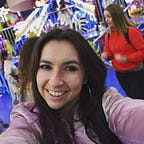FamFit
Background and the Problem
Childhood obesity affects 13.7 million children and adolescents all over the world regardless of race, ethnicity, gender or status. Obesity can affect anyone and starts as early as two years of age. As a small team, we decided to tackle the controversial issue and create a platform to inform of, and help this epidemic.
Solution
For our team, we thought that designing a platform for being fit wouldn’t stand out among all the other competitors. I knew that in order to create a site that was different than the rest, it needed to be family oriented as well as provide support for families struggling to live a healthy lifestyle.
My Role
I acted as a partner in creating a product fit for families. It was my primary job to create surveys and gather responses from groups consisting of people fitting our persona as well as using the responses to create a user story map and writing copy for our product.
The Research
Right out of the gate, we made assumptions about the people we were designing for. First, our assumption was that there was little to no awareness about the subject. In my head, it seemed that people had heard of obesity before, but that they themselves were never affected and that “obesity” was a word to describe someone MUCH bigger than they were.
That myth was quickly debunked after talking with several people. Between surveys and personal interviews,I found that most everyone was aware of their weight. What they didn’t know, was the health concerns that came with it or where to start to change it.
After completing interviews and surveys, we were able to create an empathy map to help us better know who our user is and what they want.
Meet Candis
Using the data from one on one interviews as well as the surveys and empathy map, we created a representation of the people we were trying to help. Candis is a busy mother of two children. Candis is aware of hers and her children’s lifestyle and wishes to better them. While she wants to make a change, she is afraid of making drastic changes especially if it will cost her a lot of money or if she will not see results.
When creating Candis, there were a lot of characteristics from our data that we wanted to include. However, as we added more traits, we lost sight of what and who we were creating. In this moment I knew that I could never design for everyone and their desires. Above all, the most important and relevant aspect for Candis is that her family was the most important. Moving forward, family was the focus of our design.
Ideating
Keeping Candis in mind, we started to brainstorm what we wanted our website to do for her and her family. We bounced several ideas off of each other and we ultimately decided to create a site, where Candis could track and physically see how she and her family were living. We also wanted to include many resources and support to eliminate her fear of doing things in the wrong way.
I created a user story map to show our user’s frustrations and which aspects of our website would solve those issues. Using this story map, and many post-it notes, we compiled everything into information architecture. We were so proud of ourselves and all of our great ideas until we began testing in low fidelity.
Pen and paper to low fidelity
After scribbling with pen and paper and discussing with the team, we created a low fidelity wire frame to use in our usability testing.
Testing
Between me and all of my team members, we all had the same bit of feedback. We had too much information. If our goal was to create an interface that wasn’t overwhelming, we were not achieving it. So, we came back to the drawing board to make our minimal viable product. We combined aspects that were the same and eliminated those that were not our top priority.
After we had simplified our site, we went back to testing. We found that the majority of our users already had something that tracked their exercise.
The Final Product
With the time given for the challenge, we created a responsive web application that not only served as a platform to track daily activity, but also as a resource center for individuals and families. To do this, we made family profiles so that parents can view their children’s activity and so each member of the family see’s blog posts and resources catered to their personal interests. We also decided to sync data from Fitbit. This way, users could use the resources from our site without having to do the same step twice in two different places.
Summary
In my first ever UX/UI product design challenge, I learned so much about how important research is when designing any kind of product. I loved being a part of this process and I am so excited to be able to use what I learned in future projects. This project gave me the start I need to conduct research and create the best product possible.
